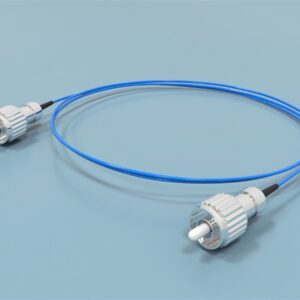$1,990.00
Sophie Brajon and colleagues (2015) utilized the Piglets Removable Y Maze in their research to explore the ability of weaned piglets to distinguish between familiar and unfamiliar humans and to assess their ability to generalize past experiences to new human encounters.
The maze, constructed from acrylic, features a low-wall Y-shape design. A board is employed to separate the piglets on the trough side while the handlers take their positions on stools placed on either side of the Y-maze’s low-wall.
Each handler’s area is delineated by a square, indicating where they sit behind an imaginary dotted white line.
The Piglets Removable Y Maze is available from Mazeengineers.

MazeEngineers empowers preclinical neuroscience research with meticulously designed, customizable behavioral apparatuses. From manual classic mazes to fully automated smart systems, we provide the tools scientists need to capture high-quality, reproducible data for studies on learning, memory, anxiety, and depression.



Features |
Length of maze: 2.79m |
Height of maze: 0.96m |
Width of maze: 1.86m |
Lengthof removable y maze low-wall: 0.84m |
Width of handle area: 0.90m |

The piglet removable Y-maze is designed to study learning, memory, and choice behaviors in piglets. This apparatus is an adaptation of the rodent Y-maze, used for assessing choice behaviors. It features an open arena with a removable low-wall divider on one side, forming two choice compartments and creating a Y-shaped structure.
This maze offers a straightforward environment to simultaneously evaluate piglets’ responses to different stimuli. In domestic pigs, human interactions are common, and positive or negative experiences with handlers can significantly influence their behaviors (Brajon, Laforest, Bergeron, Tallet, & Devillers, 2015). The piglet removable Y-maze is effective for observing changes in preference behaviors and other behavioral adjustments resulting from prior handling experiences. Additionally, it can be used to study responses to various stimuli and conditions, such as different environmental setups and sociability. It also facilitates the evaluation of the effects of diseases, brain lesions, or pharmacological manipulations on learning, memory, and choice behaviors.
The maze includes a removable isolation board that separates the start area from the choice area, preventing immediate contact with the stimuli as piglets enter. Other tools for evaluating behaviors in piglets and pigs include the Piglet T-Maze, the Pig 8 Arm Radial Maze, and the Pig Conditioned Place Preference Chamber.
The piglet removable Y-maze measures 2.79 m in length, 1.86 m in width, and 0.96 m in height. It features a rectangular open space with a removable low wall divider, 0.84 m in length, which can be inserted on one side to create two choice compartments, each measuring 0.84 m by 0.9 m. Additionally, the maze includes a detachable isolation board that can be placed to separate the starting area from the choice compartments, providing an isolated section for the subjects.
Clean the maze after every trial. Appropriately light the maze. A tracking and recording system such as the Noldus Ethovision XT can be used to assist with observations.
Place the subject in the maze and allow it to freely explore the maze and habituate with the environment for 15 minutes.
Insert the removable low-wall divider 10 minutes prior to testing. Allow the subjects to enter the maze and guide them to the isolation area. Humans A and B should then enter the maze and sit in the designated square compartments. After 3 minutes, remove the isolation board and observe the piglets’ behaviors as they explore the maze for the next 3 minutes. Alternate the seating compartments between trials.
The reactivity task can be adapted to various stimuli setups, such as familiar versus unfamiliar pigs, or enriched versus unenriched environments.
Brajon et al. (2015) investigated how piglets perceive humans using a piglet removable Y-maze. The study aimed to determine if piglets could distinguish and recognize familiar humans and generalize their past experiences with humans when encountering strangers. The experiment involved 114 piglets from 23 litters of Yorkshire, Landrace, and Duroc breeds. The piglets underwent two 5-day conditioning periods, during which they received positive and/or negative treatment from either one handler (A) or two handlers (A and then B).
Reactivity tests were conducted before and after these conditioning periods, using both familiar and unfamiliar handlers. The results showed that piglets exhibited better reactivity to familiar handlers when approached. Interestingly, when handlers remained motionless, piglets sought interaction even if they had previously received negative treatment from the handler. Following the conditioning periods, a choice test was conducted where piglets interacted with both handlers. Those that experienced inconsistent treatments preferred the handler associated with positive reinforcements, while piglets that received consistent treatments showed no handler preference. The behavioral responses indicated that piglets could generalize their experiences after the conditioning period.
The following can be observed on a piglet removable Y-maze:
The piglet removable Y-maze is designed to investigate learning, memory, and choice behaviors in piglets. Its straightforward two-choice layout provides a simultaneous view of both options available to the subjects. Without the low wall divider and isolation board, the maze functions as an open arena, allowing for quick adjustments to suit various applications and protocols. The decision-making process of the piglets is significantly influenced by their experiences and preferences, ensuring the maze’s effectiveness in behavioral assessments remains high. Additionally, it can be used to evaluate the impact of diseases, brain lesions, and pharmacological treatments on learning and memory behaviors.
Consistent and inconsistent treatments by humans can influence experimental outcomes. Variables such as age, gender, and strain might impact task behavior. Unintentional stimuli, including auditory, olfactory, or visual cues, can also affect task performance. The subject’s natural exploratory drive is crucial for successfully completing the task.
Brajon, S., Laforest, J. P., Bergeron, R., Tallet, C., & Devillers, N. (2015). The perception of humans by piglets: recognition of familiar handlers and generalisation to unfamiliar humans. Animal Cognition, 18(6), 1299-1316. doi: 10.1007/s10071-015-0900-2
There are no questions yet. Be the first to ask a question about this product.